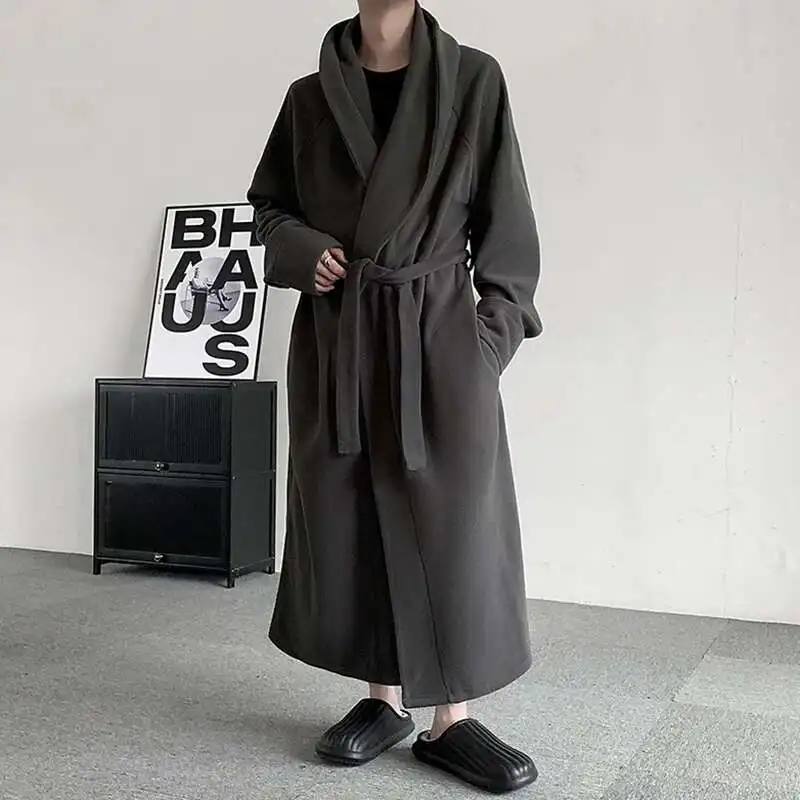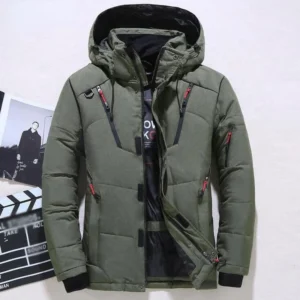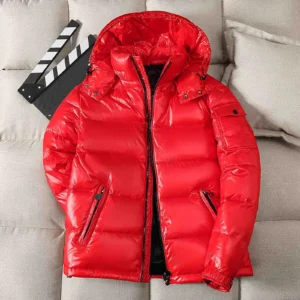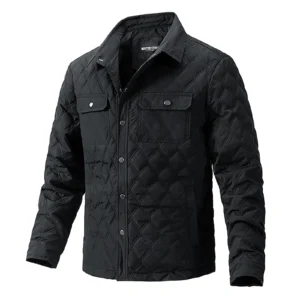Understanding Extreme Cold: When Standard Winter Gear Isn’t Enough
Winter can be challenging, but extreme cold conditions require specialized preparation beyond ordinary winter clothing. Extreme cold typically refers to temperatures ranging from -4°F to -40°F (-20°C to -40°C) and below. At these temperatures, standard winter jackets simply don’t provide adequate protection.
Several factors combine to create extreme cold conditions:
* Raw temperature (the reading on the thermometer)
* Wind chill (how much colder it feels due to wind)
* Humidity (which can increase how cold you feel)
The safety implications of inadequate protection in extreme cold are serious. At -4°F (-20°C) with moderate wind, exposed skin can develop frostbite in just 30 minutes. At -40°F (-40°C), that time drops to under 10 minutes. Hypothermia becomes a real risk when your core body temperature drops below 95°F (35°C).
Understanding when you need specialized gear is crucial. Choosing the right coat length becomes especially important when facing temperatures that standard winter clothing can’t handle. Whether you’re planning an arctic expedition, living in northern regions, or engaging in winter outdoor activities, knowing how to select appropriate extreme cold weather gear could literally save your life.
Insulation Types: The Science Behind Staying Warm
The insulation in your coat is your primary defense against extreme cold. Understanding the different types available helps you make an informed choice based on your specific needs.
Down Insulation
Down insulation comes from the soft undercoating of duck or goose plumage. Its effectiveness is measured by fill power—ranging from 400 to 900+. Higher fill power indicates greater loft and better insulating properties. Premium 800+ fill power down provides exceptional warmth with minimal weight and excellent compressibility.
Synthetic Insulation
Synthetic insulation is made from polyester fibers designed to mimic down’s loft and warmth. While slightly heavier and less compressible than down, synthetic insulation maintains its insulating properties when wet—a significant advantage in humid or wet conditions.
Comparison of Down vs. Synthetic Insulation
| Feature | Down Insulation | Synthetic Insulation |
|---|---|---|
| Warmth-to-weight | Superior | Good |
| Compressibility | Excellent | Moderate |
| Performance when wet | Poor (unless treated) | Very good |
| Durability | High (with proper care) | High |
| Drying time | Slow | Fast |
| Price | Higher | Lower to moderate |
| Allergies | Possible concern | Hypoallergenic |
Modern innovations have addressed some of down’s traditional weaknesses. Hydrophobic down treatments coat each plume with a water-resistant finish, allowing it to maintain more loft and warmth when damp. However, in sustained wet conditions, synthetic insulation still holds the advantage.
For the most extreme cold conditions, down insulated coats with high fill power (800+) generally provide the best warmth-to-weight ratio, provided they can be kept dry.
Shell Materials: Your Barrier Against the Elements
While insulation provides warmth, the shell material protects that insulation from the elements. The right shell material is crucial for maintaining insulation effectiveness in extreme cold.
Waterproof vs. Water-Resistant vs. Water-Repellent
- Waterproof: Completely prevents water penetration (15,000mm+ rating), often using membranes like Gore-Tex
- Water-resistant: Resists light precipitation for limited time periods (5,000-10,000mm rating)
- Water-repellent: Features a DWR (Durable Water Repellent) coating that causes water to bead and roll off
In extreme cold, windproofing is often more crucial than waterproofing, as most precipitation falls as snow rather than rain. Wind dramatically accelerates heat loss—a 20mph wind can make -4°F (-20°C) feel like -31°F (-35°C).
Common shell materials include:
- Nylon: Excellent durability and moderate weather resistance
- Polyester: Good weather resistance and better UV resistance than nylon
- Specialized membranes: Materials like Gore-Tex or eVent provide waterproofing while allowing sweat vapor to escape
The ideal shell balances weather protection with breathability. Without adequate breathability, your sweat condenses inside the coat, eventually compromising insulation.
For maximum protection in extreme conditions, heavy-duty winter coats with advanced shell materials provide the best defense against harsh elements while preserving the effectiveness of the insulation beneath.
Critical Construction Features: Details That Make the Difference
In extreme cold, small construction details can make a tremendous difference in a coat’s effectiveness. When shopping for extreme cold weather protection, examine these critical features:
Hood Design
- Adjustability: Multiple adjustment points to seal out drafts
- Insulation: Fully insulated hoods provide critical head protection
- Face protection: Tall collar or built-in face guard
- Helmet compatibility: Important for winter sports and work
Collar Construction
- Height: Taller collars protect the neck and lower face
- Insulation: Should be fully insulated without compression points
- Chin guards: Soft material prevents zipper chafing
Zipper Systems
- Storm flaps: Cover zippers to prevent wind penetration
- Two-way zippers: Allow venting while maintaining core warmth
- Water-resistant coatings: Prevent zipper freezing
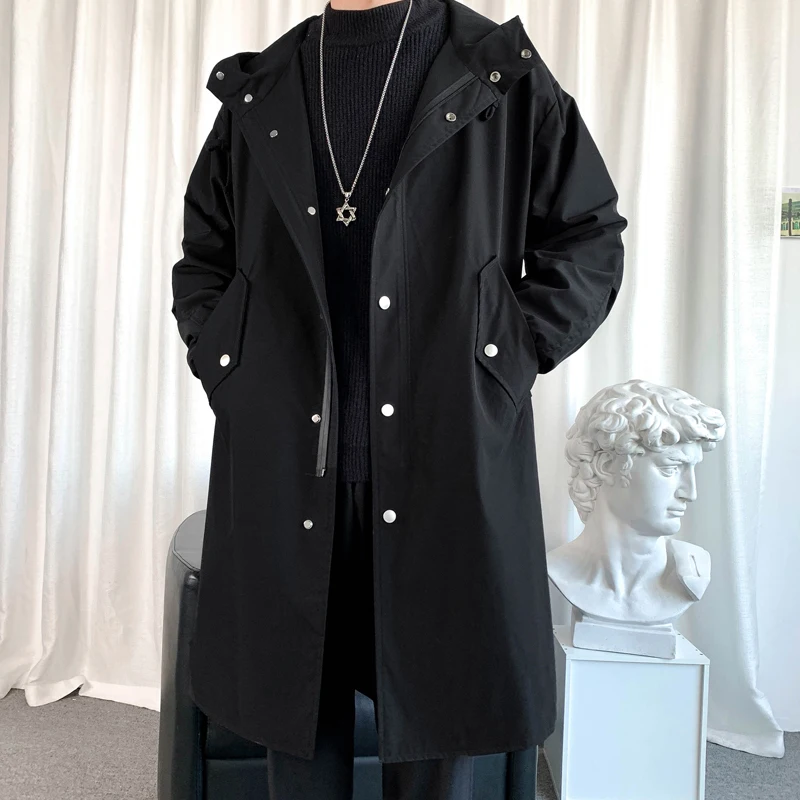
Baffle Construction
- Box construction: Creates maximum loft for down insulation
- Sewn-through: Lighter but creates potential cold spots
- Offset baffles: Prevents cold spots at seams
Hem and Cuff Designs
- Adjustable cuffs: Seal out drafts and snow
- Internal cuff gaiters: Create additional seal against elements
- Drawcord hems: Prevent wind from entering from below
Seam Construction
- Taped seams: Prevent moisture penetration at stitching points
- Welded seams: Provide maximum weather protection without stitching
- Reinforced stress points: Prevent tearing at common failure points
For extreme cold protection, coats with specialized hood designs offer superior protection for one of the body’s most vulnerable areas. The right hood can prevent significant heat loss and protect delicate facial skin from frostbite.
Getting the Right Fit: Balancing Mobility and Warmth
The perfect extreme cold coat must fit correctly to perform as designed. Too tight, and you compress the insulation and restrict layering; too loose, and you create drafts while reducing mobility.
Measuring for Extreme Cold Coats
When trying on extreme cold weather coats, wear the layers you plan to use underneath. Your coat should allow:
- Full arm mobility without exposing wrists or waist
- Enough room to add or remove mid-layers as needed
- No compression of the insulation when moving
- Sufficient length to protect your lower back and hips
Take special note of how the coat performs when:
* Reaching overhead
* Bending at the waist
* Sitting down
* Crossing your arms
A properly fitted extreme cold weather coat should allow all these movements without significant riding up or constriction. Pay particular attention to shoulder articulation, which allows arm movement without pulling up the entire coat.
Many cold weather coats include technical features like gusseted underarms or articulated elbows to improve mobility while maintaining insulation. These features are particularly important if you’ll be active in your coat.
Expert guidance on proper coat fitting can help you find the perfect balance between mobility and warmth retention, ensuring your coat performs at its best when you need it most.
Activity-Based Selection: Matching Your Coat to Your Needs
The perfect extreme cold weather coat depends heavily on how you plan to use it. Different activities create different demands, requiring specific features and design elements.
Urban Commuting and Static Activities
For city use where you’re not highly active, prioritize:
* Maximum insulation (higher fill power down often ideal)
* Longer coat length to protect thighs
* Enhanced wind resistance features
* Fashion considerations alongside function
Adventure Sports and Dynamic Activities
For high-output activities like skiing, hiking, or climbing:
* Breathability becomes crucial to prevent sweat buildup
* Articulated design for freedom of movement
* More durable outer fabrics to resist abrasion
* Often lighter insulation due to heat generated by activity
Work Environments
For outdoor work in extreme cold:
* Durability is paramount
* Enhanced visibility features may be required
* Extra pockets and tool-friendly design
* Compatibility with required safety equipment
Expedition-Level Protection
For true wilderness or arctic conditions:
* The highest quality insulation (800+ fill power down)
* Maximum weatherproofing features
* Redundant protection systems
* Emergency features like reflective elements
Parkas designed for various extreme cold activities offer specialized features tailored to specific environments and use cases. For example, a parka designed for ice fishing will have different design priorities than one made for snowmobiling or arctic expeditions.
Layering Strategy: Integrating Your Coat into a Complete System
An extreme cold weather coat works best as part of a complete layering system. Understanding proper layering principles maximizes your coat’s effectiveness.
The three-layer principle provides a framework for extreme cold protection:
- Base layer: Moisture-wicking material against your skin (merino wool or synthetic)
- Mid layer(s): Insulating layers that trap warm air (fleece, down, or synthetic insulation)
- Outer layer: Your extreme cold coat that blocks wind and precipitation

Proper layering allows you to:
* Add or remove layers as activity level or conditions change
* Create dead air spaces that provide additional insulation
* Manage moisture more effectively than a single heavy layer
Your extreme cold coat should be sized to accommodate your maximum expected layers while avoiding excessive bulk that creates gaps or reduces mobility. When selecting layers, consider how they work together—slippery synthetic layers may bunch up, while grabby fleece layers stay in place better.
Incorporating long overcoats into winter layering systems requires special consideration to ensure proper overlap with lower body layers, preventing cold spots at the waist or hips.
Investment Considerations: Balancing Budget and Performance
Extreme cold weather coats represent a significant investment, with prices ranging from around $200 to well over $1,000 for expedition-quality garments. Understanding what drives these price differences helps you make a wise investment.
Quality indicators that justify higher prices include:
- Premium insulation (higher fill power down or advanced synthetics)
- Specialized weatherproof membranes (Gore-Tex, eVent)
- Reinforced construction in high-wear areas
- Advanced features like articulated designs and sealed seams
- Comprehensive warranty coverage
When determining your budget, consider:
* How often you’ll use the coat
* The extremity of conditions you’ll face
* The potential safety implications of coat failure
* The expected lifespan of the garment
For occasional use in moderately cold conditions, a mid-range coat may provide sufficient protection. For regular exposure to truly extreme temperatures or remote locations where failure could be dangerous, investing in premium protection becomes more justifiable.
Insulated coats at different price points offer varying levels of protection, with premium options providing advantages in weight, durability, and performance at temperature extremes.
Mens Heavy Winter Coat, Mens Insulated Coat, Mens Parka Coat
Price range: $175.52 through $237.36 Select options This product has multiple variants. The options may be chosen on the product pageMens Big and Tall Winter Coats, Mens Down Coat, Mens Hooded Winter Coat, Mens Puffer Coat
Price range: $126.44 through $217.01 Select options This product has multiple variants. The options may be chosen on the product pageMens Big and Tall Winter Coats, Mens Hooded Winter Coat
Price range: $80.32 through $106.68 Select options This product has multiple variants. The options may be chosen on the product pageMens Cashmere Overcoat, Mens Hooded Winter Coat, Mens Wool Blend Coat
Price range: $128.72 through $139.68 Select options This product has multiple variants. The options may be chosen on the product pageMens Hooded Winter Coat, Mens Insulated Coat, Mens Puffer Coat, Mens Quilted Coat
Price range: $139.88 through $177.72 Select options This product has multiple variants. The options may be chosen on the product pageMens Double Breasted Pea Coat, Mens Hooded Winter Coat, Mens Quilted Coat
Price range: $81.00 through $108.48 Select options This product has multiple variants. The options may be chosen on the product page
Care and Maintenance: Protecting Your Investment
Proper maintenance dramatically extends the life and performance of your extreme cold weather coat. Different insulation types require specific care approaches.
Down Insulation Care
- Clean only when necessary using down-specific detergent
- Dry thoroughly with clean tennis balls to restore loft
- Store uncompressed on a wide hanger
- Never dry clean down garments
Synthetic Insulation Care
- Follow manufacturer instructions for washing
- Can typically withstand more frequent cleaning than down
- Less sensitive to compression during storage
- Generally easier to maintain than down
For all extreme cold weather coats:
* Reapply DWR treatments when water stops beading
* Address small tears or seam failures immediately before they spread
* Store clean and completely dry to prevent mold or mildew
* Avoid exposing to extreme heat, which can damage shell materials and coatings
With proper care, a quality extreme cold weather coat should provide many years of protection. Understanding the importance of proper winter coat maintenance helps preserve both performance and appearance over the long term.
Frequently Asked Questions About Extreme Cold Coats
What temperature rating should I look for in an extreme cold coat?
Temperature ratings vary by manufacturer and aren’t standardized. Rather than focusing solely on the rating, consider the insulation type and amount, as well as the coat’s construction features. As a general guideline, for temperatures below -4°F (-20°C), look for 800+ fill power down or equivalent synthetic insulation with appropriate wind protection.
Is a more expensive coat always better for extreme cold?
Not necessarily. While premium materials and construction often command higher prices, the “best” coat depends on your specific needs. Sometimes, a mid-range coat with features tailored to your activity might outperform a more expensive generalist coat.
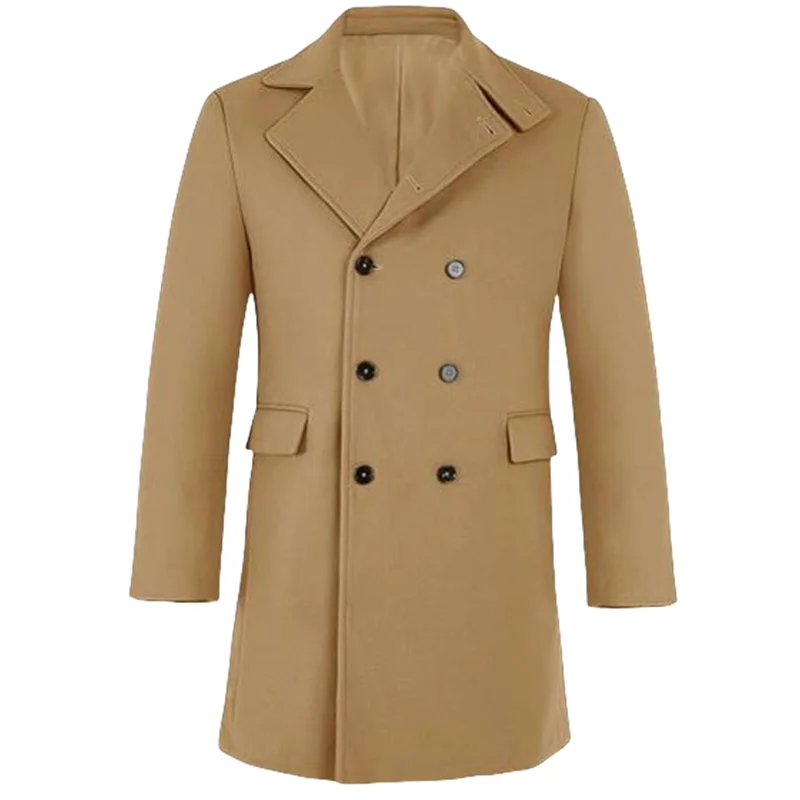
Can I use one coat for both active sports and everyday wear in extreme cold?
This depends on your activity level. High-output activities like cross-country skiing generate significant body heat, making coats designed for static cold too warm. For versatility, consider a moderately insulated coat with excellent breathability and venting options that can be adjusted during different activity levels.
How do I know if my old winter coat needs replacing?
Look for compressed or clumping insulation, damaged seams, worn areas in the shell fabric, or decreased warmth compared to when it was new. If your coat no longer repels water or wind effectively, and reapplying DWR doesn’t help, it may be time for a replacement.
Are synthetic insulations catching up to down in warmth-to-weight ratio?
The gap is narrowing with advanced synthetic insulations, but premium down (800+ fill power) still offers the best warmth-to-weight ratio available. However, synthetics continue to offer superior performance in wet conditions and are improving in compressibility and weight.
For more information about different coat materials for cold climates, explore our comprehensive guide about wool coats for extreme cold conditions.
Final Decision Framework: Making Your Choice with Confidence
After considering all factors, use this framework to finalize your extreme cold coat selection:
Identify your primary activity and environment
* Static vs. active use
* Urban vs. wilderness
* Dry cold vs. wet coldDetermine your insulation preference
* Down for maximum warmth-to-weight in dry conditions
* Synthetic for reliable performance in wet conditions
* Hybrid systems for balanced performancePrioritize critical features based on your needs
* Hood design for face protection
* Length for coverage while stationary
* Mobility features for active use
* Shell durability for abrasion resistanceTry before you buy whenever possible
* Wear your expected base and mid layers
* Perform movement tests specific to your activities
* Check for drafts and cold spots in seamsConsider long-term value over initial cost
* Calculate cost per wear over expected lifespan
* Factor in warranty and repair options
* Consider versatility across different conditions
Metro Cloak offers expertly crafted outerwear designed to meet the challenges of extreme cold while maintaining sophisticated style. Our coats combine premium materials with meticulous construction to provide exceptional protection in harsh winter conditions.
When making your final decision, remember that the best extreme cold coat balances protection, comfort, and functionality for your specific needs. Understanding the differences between short and long coat styles can help you make your final selection with confidence, ensuring you stay warm and protected even in the most challenging winter conditions.

